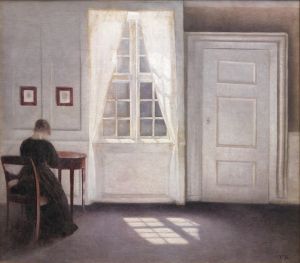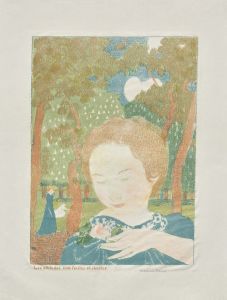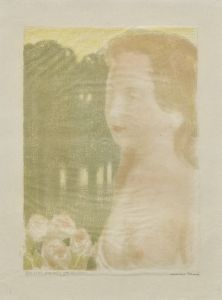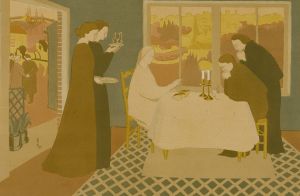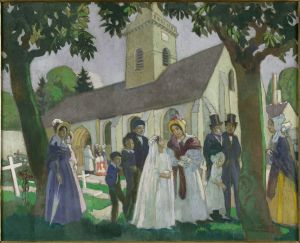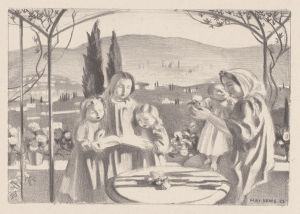
Jong meisje met bloemen voor een venster
A hand-painted replica of Maurice Denis’s masterpiece Jong meisje met bloemen voor een venster, meticulously crafted by professional artists to capture the true essence of the original. Each piece is created with museum-quality canvas and rare mineral pigments, carefully painted by experienced artists with delicate brushstrokes and rich, layered colors to perfectly recreate the texture of the original artwork. Unlike machine-printed reproductions, this hand-painted version brings the painting to life, infused with the artist’s emotions and skill in every stroke. Whether for personal collection or home decoration, it instantly elevates the artistic atmosphere of any space.
Maurice Denis was a prominent French painter and writer, associated with the Symbolist and Post-Impressionist movements. He was a founding member of the Nabi group, which played a crucial role in the transition from Impressionism to modern art. Denis's work is characterized by its emphasis on color, form, and the spiritual aspects of art. One of his notable works is "Jong meisje met bloemen voor een venster," which translates to "Young Girl with Flowers at a Window."
This painting exemplifies Denis's interest in combining decorative elements with symbolic content. The composition features a young girl standing by a window, surrounded by flowers. The use of flowers in the painting is significant, as they often symbolize purity, beauty, and the transient nature of life. The window serves as a metaphorical boundary between the interior world of the girl and the exterior world beyond, a common theme in Denis's work that reflects his interest in the interplay between the spiritual and the material.
Denis's style in this painting is marked by his use of bold, flat areas of color and simplified forms, which are characteristic of the Nabi movement. The Nabis, including Denis, were influenced by Paul Gauguin and Japanese prints, which encouraged them to move away from the naturalism of Impressionism towards a more abstract and symbolic approach. In "Jong meisje met bloemen voor een venster," Denis employs a harmonious color palette that enhances the serene and contemplative mood of the scene.
The painting also reflects Denis's interest in religious and spiritual themes. Throughout his career, Denis was deeply influenced by his Catholic faith, and many of his works explore themes of spirituality and divine presence. While "Jong meisje met bloemen voor een venster" does not explicitly depict a religious scene, the serene expression of the girl and the tranquil setting suggest a sense of inner peace and contemplation, which can be interpreted as a reflection of Denis's spiritual concerns.
Denis was also known for his theoretical writings on art, where he emphasized the importance of the decorative aspect of painting and the idea that a painting should be a flat surface covered with colors assembled in a certain order. This philosophy is evident in "Jong meisje met bloemen voor een venster," where the decorative arrangement of colors and forms creates a harmonious and balanced composition.
The painting is a testament to Denis's ability to blend decorative art with profound symbolic meaning, making it a significant work within his oeuvre. It captures the essence of the Nabi movement's goals to transcend the mere representation of the visible world and to express deeper spiritual truths through art.
"Jong meisje met bloemen voor een venster" remains an important work for understanding the development of modern art at the turn of the 20th century. It showcases Maurice Denis's unique approach to painting, where he masterfully combines elements of symbolism, spirituality, and decorative art to create a work that is both visually appealing and intellectually engaging.










